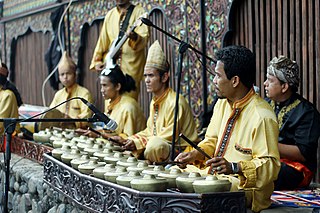
Kapila Vatsyayan was a leading scholar of Indian classical dance, art, architecture, and art history. She served as a member of parliament and bureaucrat in India, and also served as the founding director of the Indira Gandhi National Centre for the Arts.

Dance in India comprises numerous styles of dances, generally classified as classical or folk. As with other aspects of Indian culture, different forms of dances originated in different parts of India, developed according to the local traditions and also imbibed elements from other parts of the country.

Elphinstone College is one of the constituent colleges of Dr. Homi Bhabha State University, a state cluster university. Established in 1856, it is one of the oldest colleges in Mumbai. It played a major role in shaping and developing the educational landscape of the city. It also played a pivotal role in the inception of the University of Mumbai.
Public folklore is the term for the work done by folklorists in public settings in the United States and Canada outside of universities and colleges, such as arts councils, museums, folklife festivals, radio stations, etc., as opposed to academic folklore, which is done within universities and colleges. The term is short for "public sector folklore" and was first used by members of the American Folklore Society in the early 1970s.
Historica Canada is a Canadian charitable organization dedicated to promoting the country's history and citizenship. All of its programs are offered bilingually and reach more than 28 million Canadians annually.

Cultural heritage is the heritage of tangible and intangible heritage assets of a group or society that is inherited from past generations. Not all heritages of past generations are "heritage"; rather, heritage is a product of selection by society.

The Agency for Cultural Affairs is a special body of the Japanese Ministry of Education, Culture, Sports, Science and Technology (MEXT). It was set up in 1968 to promote Japanese arts and culture.
An intangible cultural heritage (ICH) is a practice, representation, expression, knowledge, or skill considered by UNESCO to be part of a place's cultural heritage. Buildings, historic places, monuments, and artifacts are cultural property. Intangible heritage consists of nonphysical intellectual wealth, such as folklore, customs, beliefs, traditions, knowledge, and language. Intangible cultural heritage is considered by member states of UNESCO in relation to the tangible World Heritage focusing on intangible aspects of culture. In 2001, UNESCO made a survey among states and NGOs to try to agree on a definition, and the Convention for the Safeguarding of the Intangible Cultural Heritage was drafted in 2003 for its protection and promotion.

Sangeet Natak Akademi is the national level academy for performing arts set up by the Government of India.

Talempong is a traditional music of the Minangkabau people of Western Sumatra, Indonesia. The talempong produce a static texture consisting of interlocking rhythms.
DakshinaChitra is a living-history museum in the Indian state of Tamil Nadu, dedicated to South Indian heritage and culture. It is located 25 kilometres (16 mi) to the south of Chennai. Opened to the public on 14 December 1996, the museum was founded and is being managed by the Madras Craft Foundation (MCF). The MCF was established in 1984. Deborah Thiagarajan, an Indian art historian of American origin, governs the museum. The museum is built on 10 acres (4.0 ha) of land taken on a 33-year lease from the Government of Tamil Nadu. Located at Muttukadu, on the East Coast Road connecting Chennai and Pondicherry, the site overlooks Bay of Bengal.

The culture of Bengal defines the cultural heritage of the Bengali people native to eastern regions of the Indian subcontinent, mainly what is today Bangladesh and the Indian states of West Bengal and Tripura, where they form the dominant ethnolinguistic group and the Bengali language is the official and primary language. Bengal has a recorded history of 1,400 years. After the partition, Bangladeshi culture became distinct from the mainstream Bengali culture, thus their culture evolved differently, still there are many commonalities in Bangladeshi culture & West Bengali culture which connects them both together as Bengali culture.

Richard Kurin, an American cultural anthropologist, museum official and author, is the Acting Provost and Under Secretary for Museums and Research at the Smithsonian Institution. He is a key member of the senior team managing the world's largest museum and research complex with 6,500 employees and a $1.4 billion annual budget, caring for more than 139 million specimens, artifacts and artworks, working in 145 countries around the globe, hosting some 30 million visitors a year, and reaching hundreds of millions online and through the Smithsonian's educational programs and media outreach. Kurin is particularly responsible for all of the national museums, scholarly and scientific research centers, and programs spanning science, history, art and culture.

Angika is an Eastern Indo-Aryan language spoken in some parts of the Indian states of Bihar and Jharkhand, as well as in parts of Nepal.
Ghulam-Sarwar Yousof was a Malaysian academic and writer. He was an expert in traditional Malay and South-East Asian theatre as well as one of the leading writers of Malaysian English Literature.
Pushkar Sohoni is an architect, and an architectural and cultural historian. He is an associate professor in the department of Humanities and Social Sciences at the Indian Institute of Science Education and Research, Pune. He was Chair of the department from 2019 to 2024.

The Fine Arts Department is a government department of Thailand, under the Ministry of Culture. Its mission is managing the country's cultural heritage.

Project Mausam is a cultural project by the Indian Ministry of Culture and Archaeological Survey of India (ASI) with the Indira Gandhi National Centre for the Arts and the National Museum in New Delhi which aims to connect countries on the Indian Ocean. The term "mausam" means "weather" or "season" and is derived from regional dialects including the Arabic word mawsim, which refers to the season when boats can safely sail.

Aishwarya Tipnis is an Indian architect, educator and heritage conservationist, whose eponymous practice Aishwarya Tipnis Architects focuses on heritage conservation of neglected monuments and significant buildings of India. In 2015, her work on the century-old Main Building of The Doon School received the Honourable Mention under the UNESCO Asia-Pacific Awards for Cultural Heritage Conservation. In 2016, the firm's restoration work on the walls and bastions of the 18th-century Mahidpur Fort, in Madhya Pradesh, was given the Award of Merit under the UNESCO Asia Pacific Heritage Awards. In 2018, she became the youngest architect to be appointed the Chevalier de l'Ordre des Arts et des Lettres by the French government for her preservation work of French heritage in India, particularly Chandernagore in West Bengal. Tipnis was part of the UNESCO Expert Team for preparing the Comprehensive Conservation Plan for the Darjeeling Himalayan Railway, a UNESCO World Heritage Site. She has been recognised as a Global Cultural Leader by the European Union in 2016.
C. Kurt Dewhurst is an American curator and folklorist. Dewhurst is Director for Arts and Cultural Partnerships at Michigan State University (MSU) and also a Senior Fellow in University Outreach and Engagement. At MSU, he is also Director Emeritus of the Michigan State University Museum and a Professor of English and Museum Studies.












